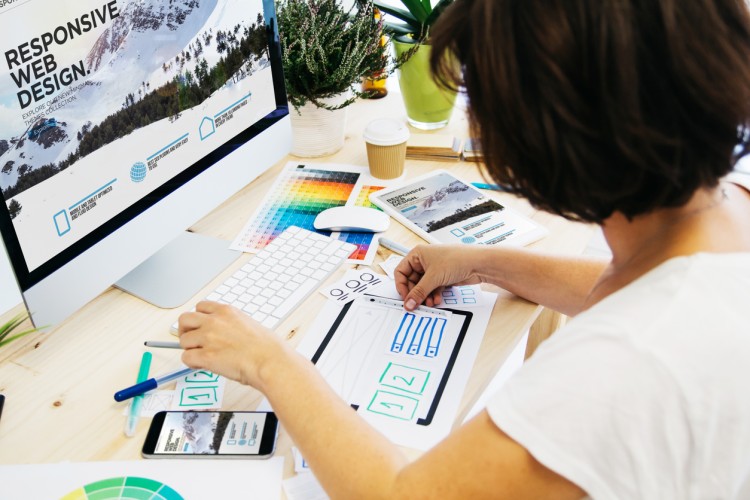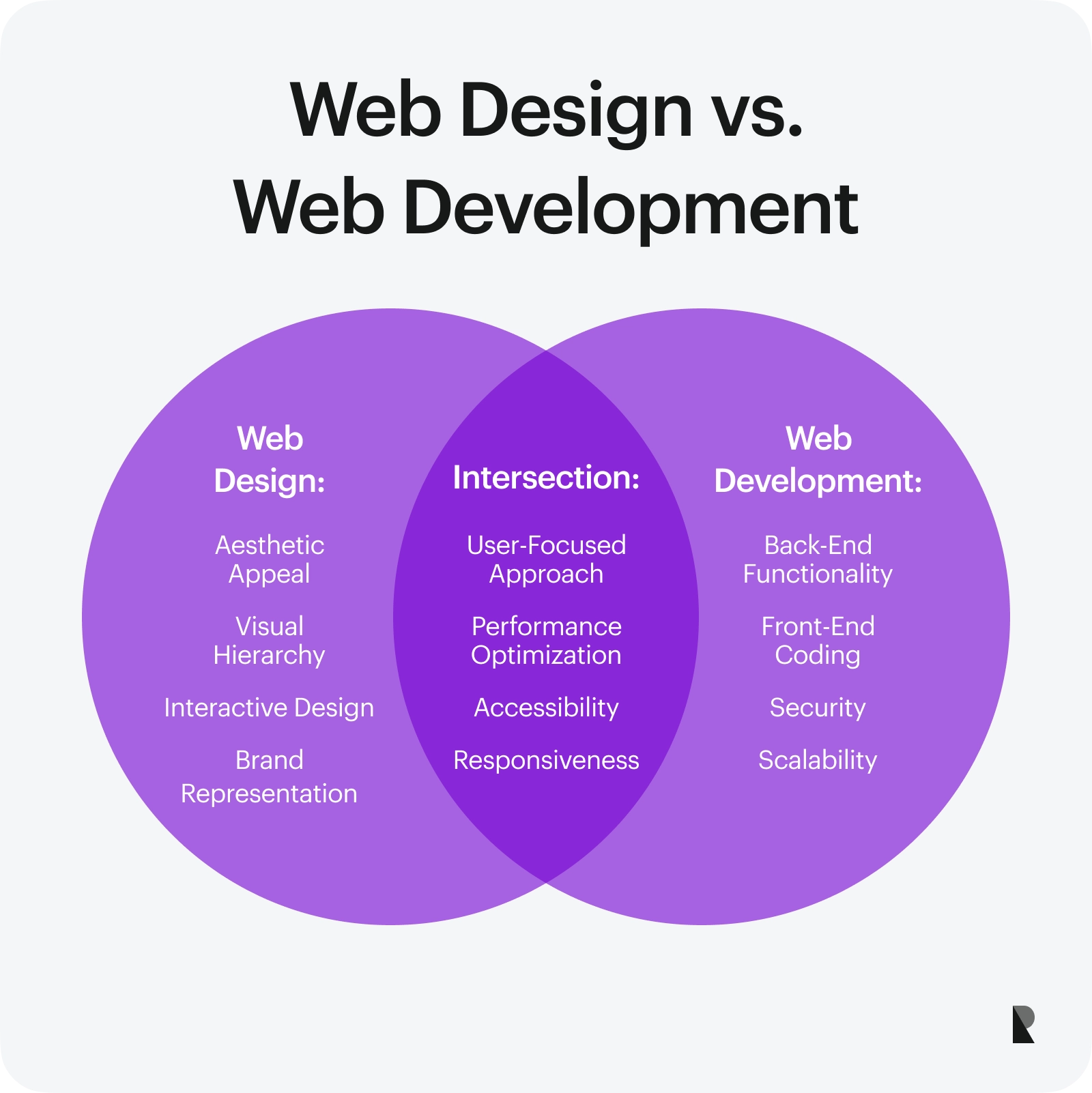Exploring the Various Sorts Of Website Design and Their Unique Advantages
The landscape of website design includes a variety of designs, each offering unique advantages that accommodate various user demands. Level and minimalist layouts emphasize quality, while receptive and worldly styles improve adaptability throughout devices. Typography-driven and illustrative methods aim to boost involvement and psychological resonance. Comprehending these varied kinds can considerably affect user experience and brand name assumption. What exists underneath the surface of these design selections?
Minimal Web Layout

Minimal website design often includes a limited color palette and uncomplicated typography, which not just boosts appearances yet likewise strengthens brand identification. The decreased complexity can result in quicker filling times, better boosting individual fulfillment. In addition, by minimizing visual mess, individuals can involve with web content better, causing boosted comprehension and retention. On the whole, minimal Web design promotes a seamless customer experience, making it a preferred choice for brands aiming to convey clearness and expertise in their on the internet existence.
Responsive Website Design
Responsive Web style has become crucial in today's electronic landscape, guaranteeing mobile compatibility for users throughout numerous tools. This strategy substantially improves customer experience by supplying seamless navigation and accessibility, despite display dimension. As more people access the Web on tablets and smartphones, the importance of responsive layout continues to expand.

Mobile Compatibility Importance
As smart phone use remains to increase, ensuring internet sites work with numerous screen sizes has actually come to be crucial for efficient interaction and interaction. Mobile compatibility, often accomplished via responsive website design, allows web sites to adjust seamlessly to mobile phones, tablet computers, and various other gadgets. This flexibility not just reaches a broader audience but likewise improves brand name credibility. An internet site that functions well on mobile phones reflects professionalism and focus to individual requirements. Additionally, online search engine focus on mobile-friendly sites in their rankings, making compatibility a vital element for on-line presence. By purchasing mobile compatibility, services can boost their electronic visibility and deal with the expanding variety of individuals that access details on the move. Prioritizing mobile-responsive design is vital in today's electronic landscape.
Improved User Experience

Flat Style
Flat layout is a minimalist method to website design that stresses simpleness and quality. By eliminating three-dimensional aspects such as slopes, darkness, and appearances, level design creates a visually enticing interface that prioritizes content and functionality. This design advertises an intuitive navigation experience, as individuals can promptly determine key features and activities without distraction.
One of the main benefits of flat layout is its responsiveness throughout different gadgets and display dimensions. Its clean lines and straightforward designs adjust flawlessly, making sure a consistent experience for individuals on mobile, tablet, or desktop platforms. In addition, flat style typically incorporates strong colors and typography, boosting aesthetic impact and brand name acknowledgment.
Furthermore, the simpleness inherent in level style results in quicker filling times, which contributes positively to customer fulfillment - web development. Generally, level design continues to be a popular option for contemporary Web growth, aligning with modern aesthetic choices while providing outstanding use
Product Style
Product Design represents a layout language created by Google that concentrates on producing a instinctive and natural customer experience throughout digital platforms. This technique stresses making use of grid-based layouts, responsive animations, and deepness impacts such as lights and darkness, which aid to develop a feeling of pecking order and spatial partnerships. By simulating the real world, Material Design permits individuals to communicate with electronic interfaces in a much more all-natural and interesting way.
Among the crucial benefits of Product Layout is its flexibility throughout numerous tools and screen sizes, guaranteeing a regular experience for users. In addition, it promotes a clear aesthetic language that improves use, making it simpler for users to browse intricate applications. The unification of lively colors and bold typography additionally plays an important duty in drawing focus to crucial elements, consequently improving general individual engagement - website development. Material Design has actually ended up being a preferred option among programmers looking for to create useful and aesthetically attractive internet sites.
Typography-Driven Layout
Typography-Driven Design concentrates on the tactical use kind to enhance the aesthetic and functional aspects of a website. This style method prioritizes fonts, font dimensions, spacing, and hierarchy to produce aesthetic rate of interest and guide individual experience. By carefully selecting typography, designers can communicate brand name identity and evoke emotions, making the content more appealing and accessible.
Efficient typography boosts readability and use, making certain that individuals can quickly soak up and browse the site info. The ideal mix of kind can additionally establish a clear aesthetic pecking order, permitting individuals to swiftly recognize essential messages and phones call to action.
Furthermore, a typography-driven approach can be adjusted to numerous devices, guaranteeing uniformity across platforms. This versatility is necessary in today's multi-device landscape, where user experience is vital. Eventually, Typography-Driven Style offers not just as an artistic option but also blog here as a functional component that greatly affects a web site's performance.
Illustrative Website Design
Illustrative Web design employs aesthetic storytelling techniques that can substantially boost individual engagement. By integrating special illustrations, web sites can create a remarkable brand name identification that resonates with their audience. This method not only mesmerizes visitors however also interacts messages in an aesthetically compelling manner.
Aesthetic Storytelling Techniques
A wide variety of Web developers employ visual storytelling strategies to develop interesting and immersive customer experiences. This technique incorporates typography, layout, and images to tell a tale that reverberates with users on an emotional level. By integrating engaging visuals, designers can effectively share messages and stimulate feelings, assisting visitors via a brand name's trip. Infographics, animations, and interactive aspects serve to boost stories, making complex information much more available and unforgettable. In addition, aesthetic narration can develop a natural brand name identification, as regular imagery and styles reinforce core values and messages. Eventually, this strategy not only captivates customers yet likewise fosters a deeper link with the material, encouraging exploration and retention. Through skilled application, aesthetic storytelling transforms basic Web experiences into vibrant and significant communications.
Enhancing Customer Interaction
Effective Web design significantly enhances individual interaction by leveraging illustrative components that attract attention and foster interaction. Pictures can simplify complicated principles, making them more unforgettable and approachable for individuals. They break the uniformity of text-heavy pages, developing visual breaks that invite exploration. On top of that, special pictures can stimulate feelings, encouraging individuals to connect with the content on a much deeper level. Interactive components, such as animations or hover results, can also enhance engagement by inviting individuals to take part proactively instead than passively consuming info. This approach not only keeps visitors on the site longer yet also boosts the possibility of return gos to. Ultimately, efficient illustratory website design transforms the user experience, making it a lot more enjoyable and impactful.
Branding Via Image
Aesthetic aspects play a considerable duty fit a brand's identity, and images are a powerful tool hereof. Illustrative website design allows brands to convey their unique character and values with custom art work. This method fosters a much deeper emotional link with the audience, improving memorability and engagement. By incorporating pictures, brands can separate themselves in a congested market, producing a distinctive aesthetic narrative that reverberates with their target group. Furthermore, images can make and streamline complicated principles material more accessible, effectively interacting messages in an appealing manner. On the whole, branding through image not just improves the individual experience but likewise reinforces brand name recognition, making it a beneficial approach for services aiming to develop a strong on the internet visibility.
Frequently Asked Questions
Exactly how Do I Pick the Right Web Design Type for My Organization?
To choose the best website design kind for a service, one should analyze goals, target market, and market standards. Assessing individual experience and functionality will certainly guide the option process for excellent engagement and effectiveness.
What Equipment Are Finest for Producing Different Website Design Designs?
Popular devices for developing varied website design styles consist of Adobe XD, Figma, Sketch, and WordPress. Each offers distinct attributes customized to various layout requirements, allowing designers to develop visually appealing and functional web sites effectively.
Just How Much Does Expert Website Design Normally Expense?
Professional Web design generally costs in between $2,000 and $10,000, relying on intricacy, attributes, Extra resources and designer expertise. Custom remedies and continuous maintenance may enhance costs, while design templates can use more economical choices for easier projects.
Can I Incorporate Numerous Web Design Keys In Properly?
Yes, integrating multiple Web layout kinds can be efficient. By incorporating elements from numerous styles, designers can create distinct, engaging individual experiences that satisfy varied target markets while improving capability and aesthetic charm.
Just How Do Design Fads Impact Individual Experience and Engagement?
Layout patterns considerably influence customer experience and involvement by enhancing visual allure, improving navigation, and promoting psychological links - website design. Remaining upgraded with fads allows designers to develop intuitive interfaces that reverberate with users and urge prolonged interactions
Minimal and level layouts highlight quality, while responsive and worldly layouts enhance convenience throughout devices. It may appear counterproductive, minimalist Web design highlights simplicity to her explanation boost customer experience. Receptive Web design plays an important duty in enhancing user experience by guaranteeing that a site adjusts effortlessly to different display sizes and tools. Level layout is a minimal technique to Web style that stresses simpleness and clearness. Product Design represents a layout language established by Google that focuses on creating a intuitive and natural individual experience across electronic systems.